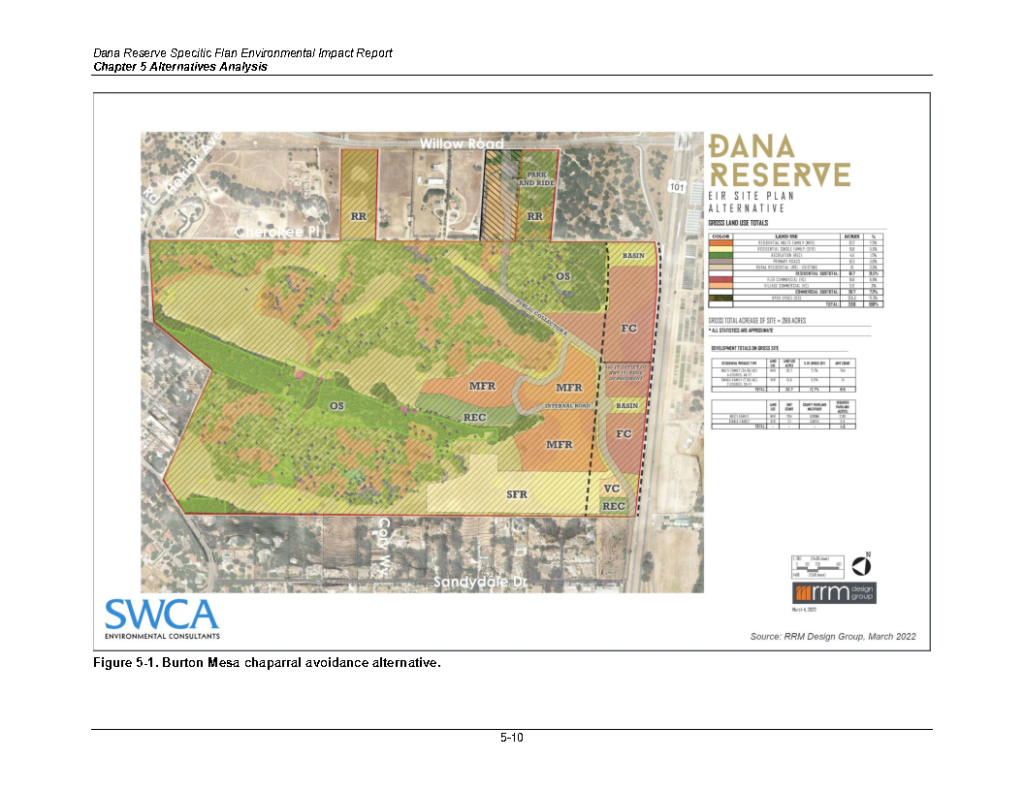The Alternatives Section of the DEIR summarizes the Class I impacts of the project (DEIR at 5-3 through 5-6), describes alternatives considered but discarded (5-8 through 5-11), and analyses the No-project alternative and five other alternatives, defined roughly as follows:
- Alternative 1-applicant-preferred alternative, which moves neighborhood 10, the affordable housing area, out of an oak woodland area and into a more centrally located area of the site and allows as many residential units as the Project (1,289).
- Alternative 2 – La Canada Ranch alternative, which would vastly increase the amount of open space, and allow only 535 residential units.
- Alternative 3 – Residential Rural Cluster alternative, which would include a similar amount of open space as the Project, remove the commercial development, and would allow anywhere from 78 to 390 residential units.
- Alternative 4 – Development on Non-Native Grassland alternative, which would vastly increase the amount of open space to 183 acres and include a 15% reduction in residential units to 1,100 (and also changing the ratio of RSF to RMF); and
- Alternative 5 – Gradual Transition alternative, which includes open space similar to the Project, but would include a 12% reduction in residential units to 1,135 (and also changing the ratio of RSF to RMF.
The above alternatives differ in their feasibility and ability to reduce Class I impacts and inconsistencies with County plans and policies. See the alternatives in the EIR here: Chapter 5. Alternatives Analysis (ca.gov)
The EIR rejects an alternative, the Burton Mesa chaparral avoidance alternative, because “it may be infeasible from a cost perspective” (DEIR at 5-9). This alternative would preserve 205 acres in open space, and depending on how the units are allocated, could allow up to 600-700 residential units, although the EIR claims 815, based on 111 RSF units, and 704 RMF units. We believe this to be the Environmentally Superior Alternative that optimizes affordable housing while maximizing conservation of oak woodlands.

